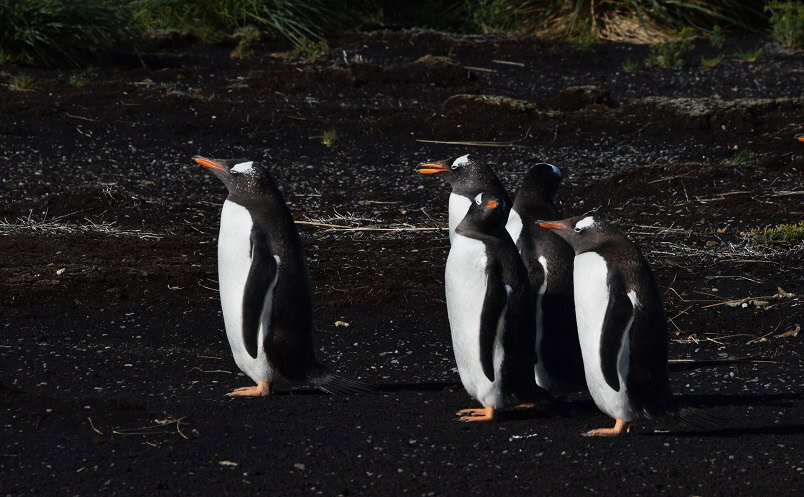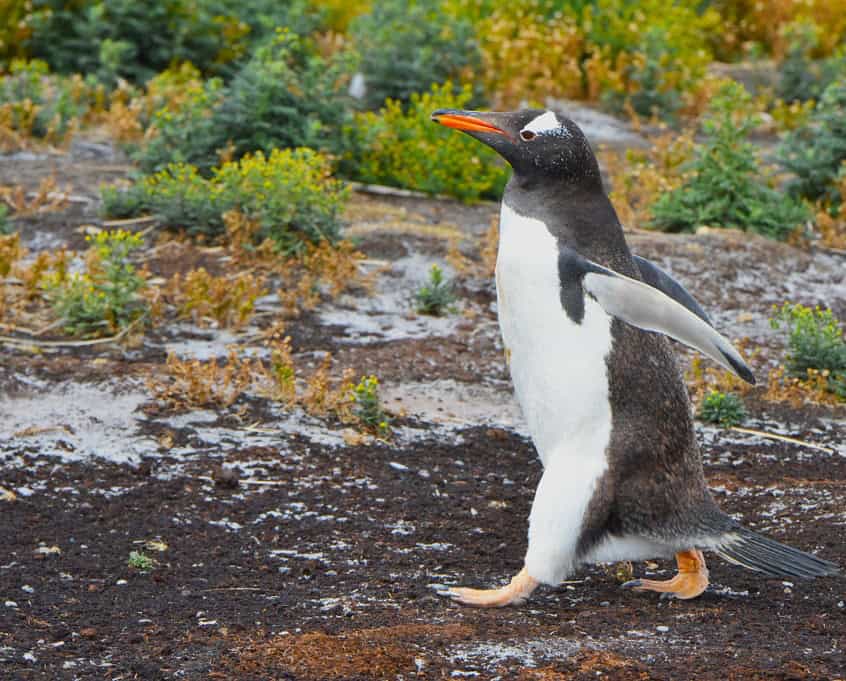
The Gentoo Penguin is a medium-sized penguin, although it is the largest species in the medium-sized group at 90 cm (35 inches) They can be identified by the white spot on its head. Actually, what appears to be a white spot extends around the back of the neck to join with the white spot on the other side. This is only visible if you are viewing the penguin from the back.
Penguins of the World
A new page is coming soon on Birdtripper.
A major article on Penguins of the world is coming soon on Birdtripper. This article will cover everything about the 18 species, including maps of where to find them and photos of each species. The species will be listed by size and also by groups. They are divided into three sizes: small, medium and large. They will also be organized by groups. There are four distinct groups, with one group being the three brush-tailed species, including the Gentoo Penguin.
Range
Gentoo Penguins live on the Antarctic Peninsula, the northernmost point in Antarctica, which is 1,100 km (680 miles) from South America.
In addition to the Antarctic Peninsula, Gentoo Penguins can be found on the Falkland Islands, South Georgia, and other islands north of Antarctica. A few can be found at the southern tip of South America.
Where to see the Gentoo Penguin
The best place to observe the Gentoo Penguin is on Sea Lion Island, which is part of the Falkland Islands but is a 40-minute flight south of the Falklands airport at Stanley.
On Sea Lion Island, you can see thousands of Gentoo Penguins wandering around. You can spend all day observing and photographing them if you want. However, there are many other birds to see on the island, including other species of penguins.
Note that penguins spend most of their time at sea when not nesting. January is the best time to visit Sea Lion Island.
A new page on Birdtripper is coming soon, detailing everything you need to know for a trip to Seal Lion Island.
Gentoo Penguin – Diet
Like all penguins, the Gentoo’s main food is fish. However, they also eat squid, krill, crustaceans and other seafood.
Gentoo Penguin – Nesting
Unlike smaller penguins, Gentoos do not nest in an underground burrow. Instead, they gather stones in a circle around the nest. This circle of stones can sometimes be as high as 20 cm (8 inches). I guess it depends on how energic the parents are. Sometimes, fights break out with the neighbours when they steal each other’s stones.
The Gentoos lay two eggs in their circle, and the parents take turns incubating them. The eggs hatch after about 35 days, and the babies remain in the nest for another 30 days. After that, the chicks venture out to play with other chicks and form a large group called a creche. The parents continue to feed them until they become adults at between 80 and 100 days.
Brush-tailed Penguins

Penguins are not known for having long tails. In fact, most of them have only a tiny stub of a tail. However, three species, called the Brush-tailed Penguins, have a very noticeable tail. The Gentoo has the longest tail of any penguin species.
As the Gentoos waddle around, their tails swing from side to side, like a brush cleaning tracks behind them. Hence the name “Brush-tailed”.
Threats
The man threast to Gentoo Penguins are Sea Lions, Leopard Seals and Orca (Killer Whales). No birds or mammals are a threat to adult Gentoo penguins on land. However, Skuas, Giant Petrels, Kelp Gulls and Snowy Sheathbills will take checks and eggs if they get the chance.